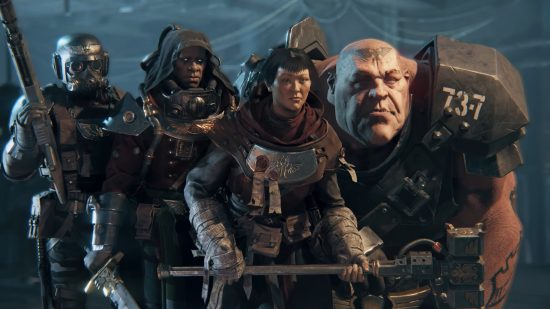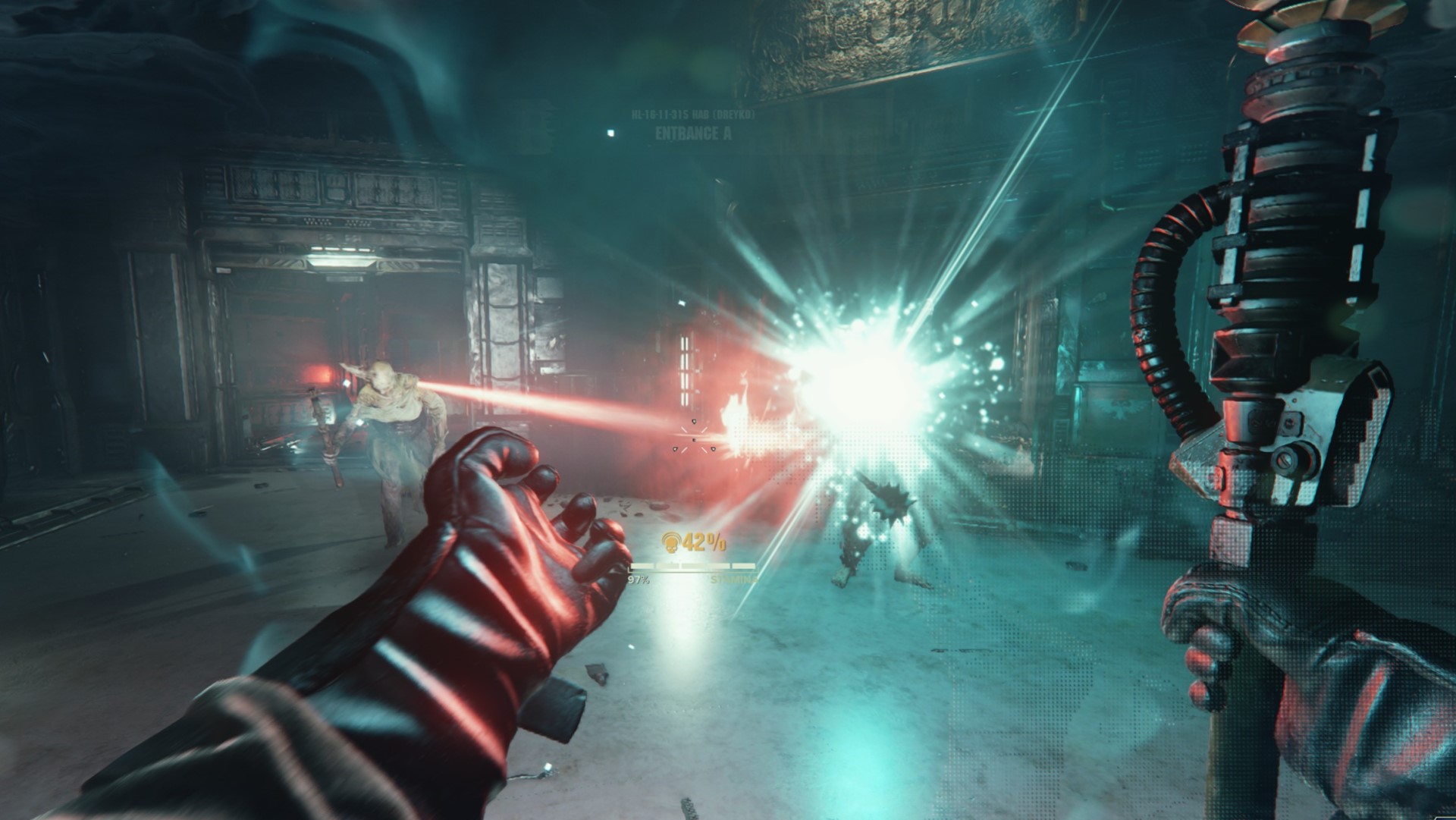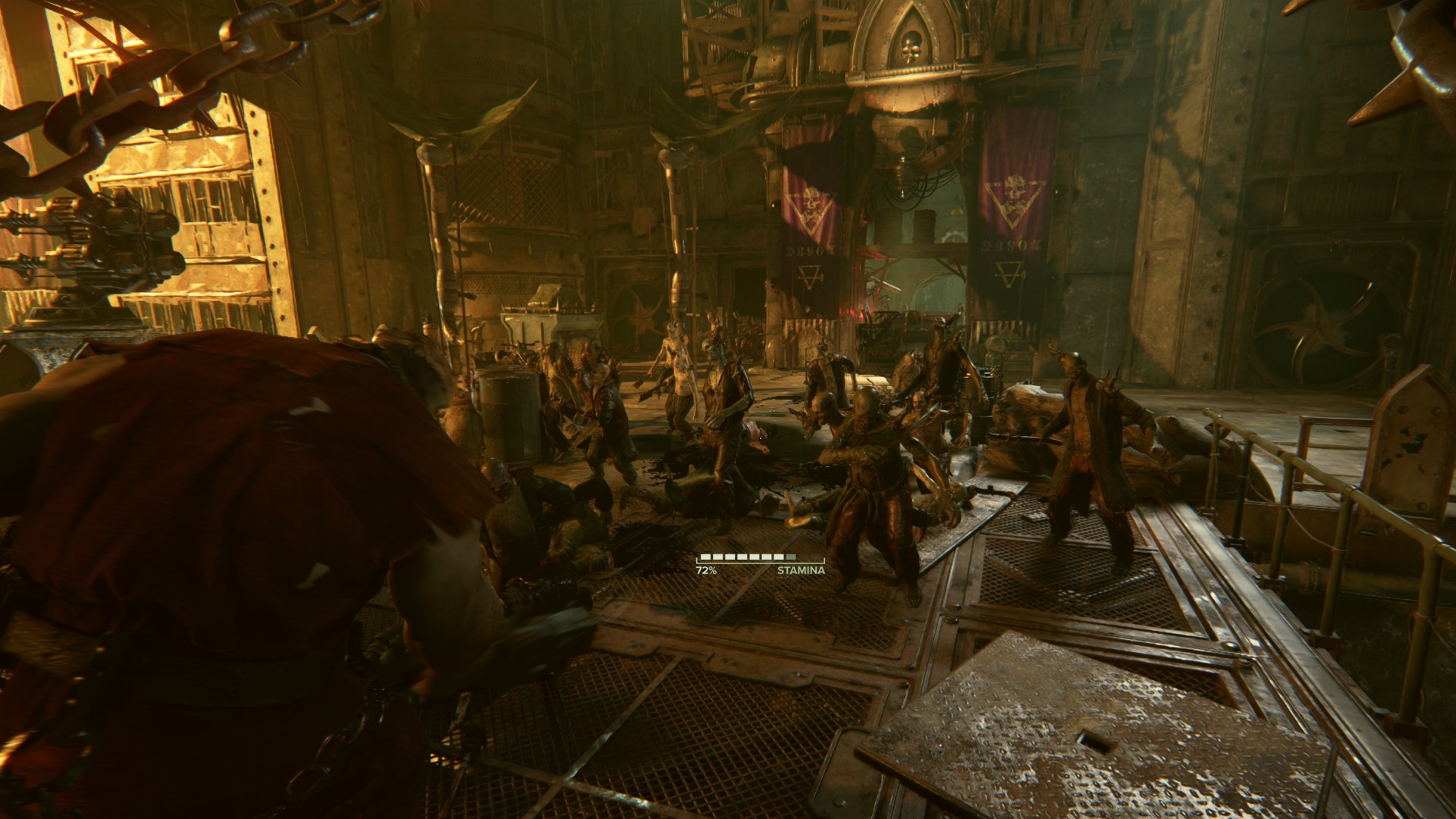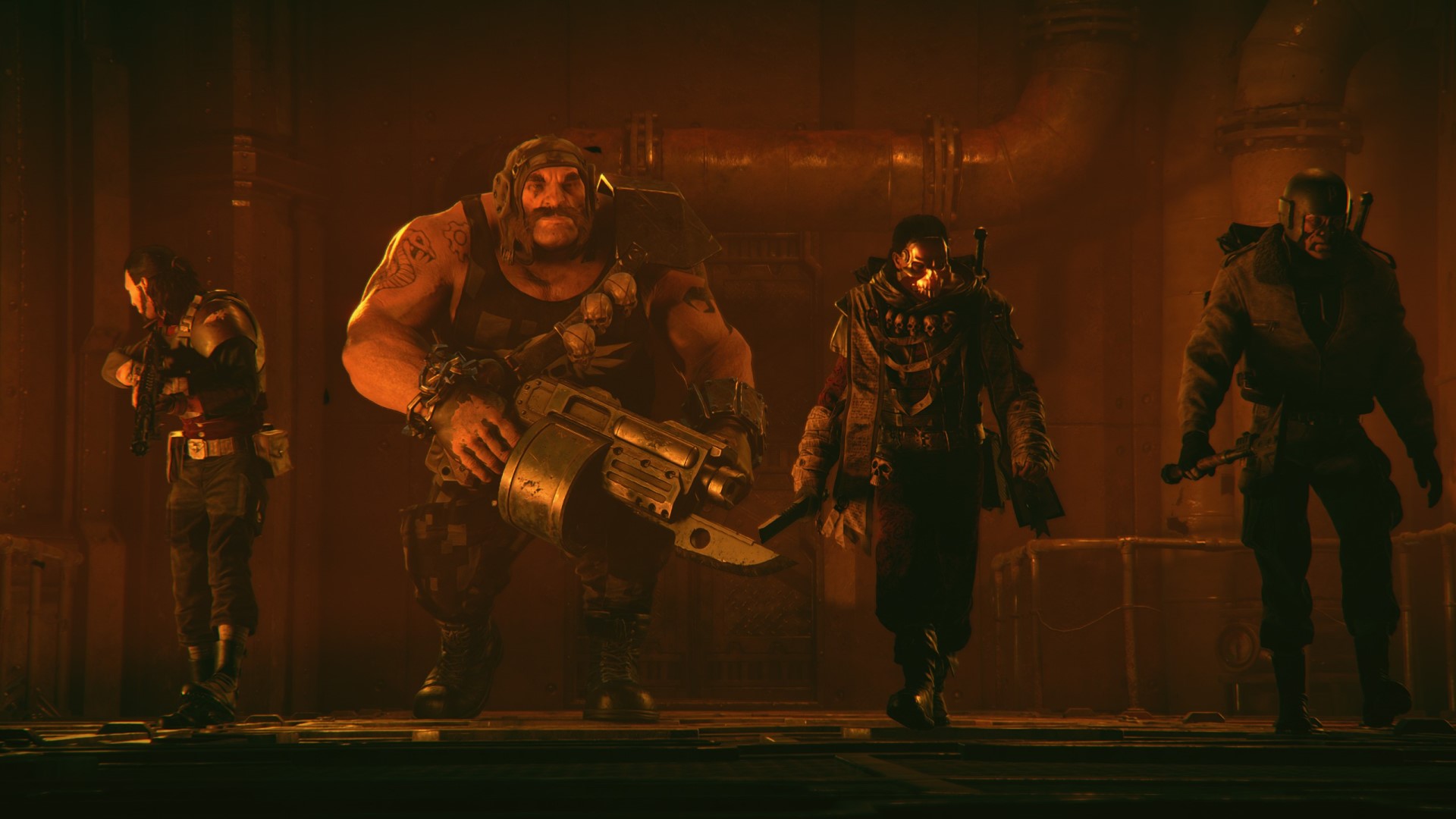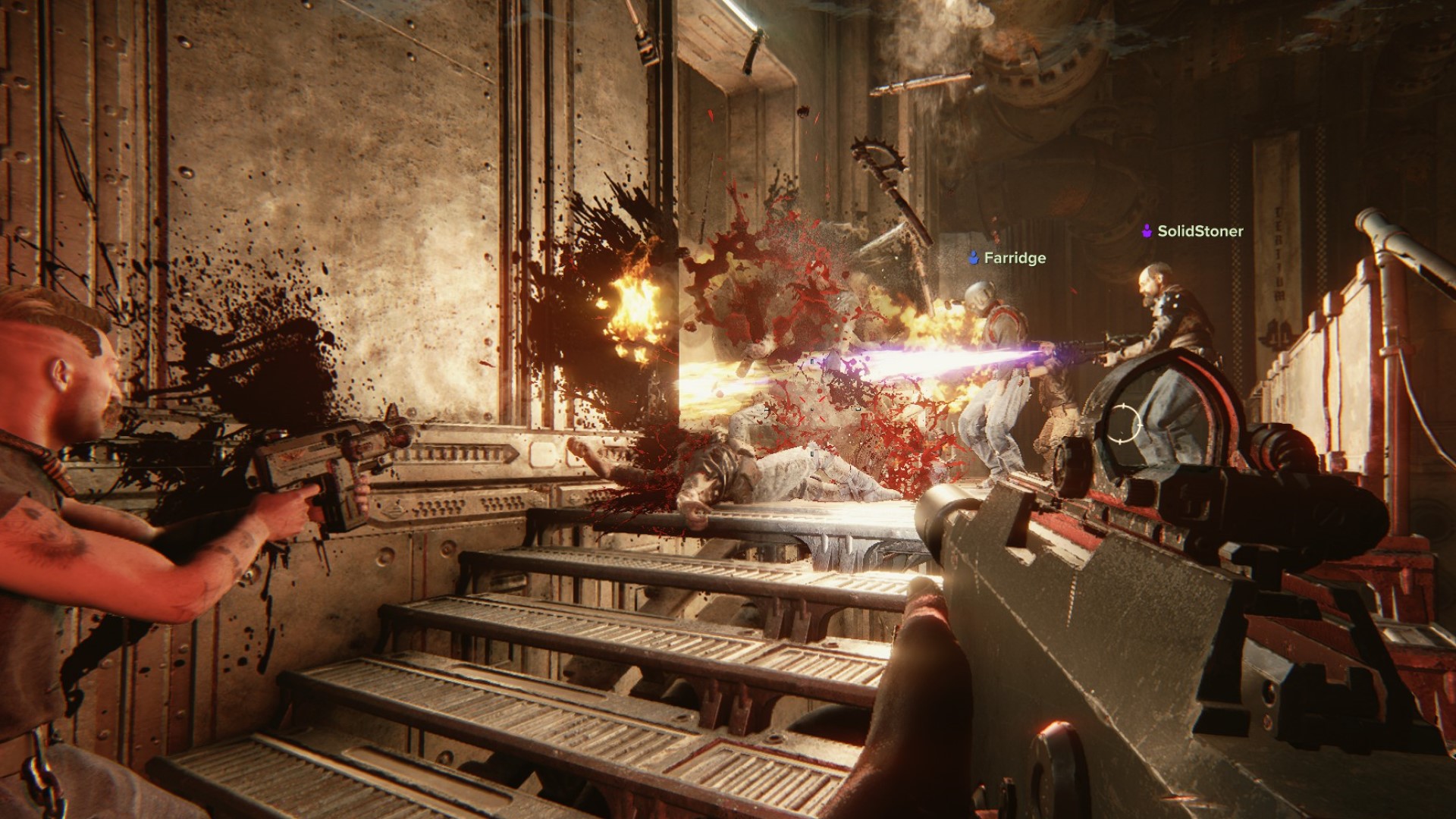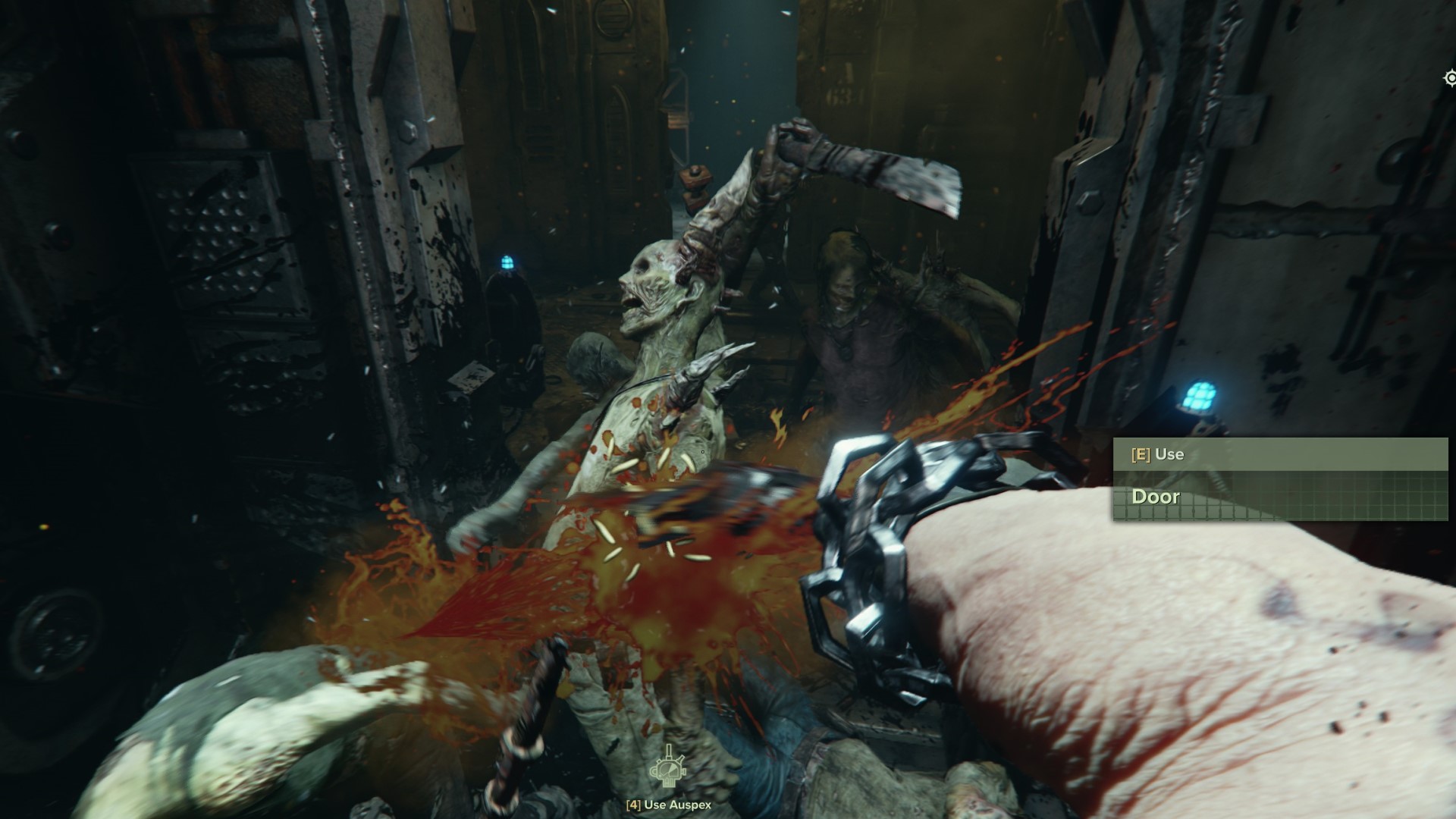Our Verdict
Frustrating technical issues hold Darktide back from being the definitive Warhammer 40,000 experience on PC.
The time I’ve put in for our Warhammer 40k Darktide review has been split, roughly evenly, between gleefully scything my way through hordes of shambling Chaos monstrosities shoulder to shoulder with my ragamuffin comrades, and poring over graphics options menus and forum posts, trying to get the co-op game to run. When Darktide is working, it’s brilliant: its action unfolds in the most vivid depiction of the 41st millennium ever seen in a game, and it’s told from a fresh outsider’s perspective.
Unfortunately, all of Darktide’s fantastic worldbuilding and dynamic, teamplay-based violence often gets sidelined by the host of technical issues still storming around like a rogue plague ogryn. Simply getting things to the point at which I could finish a run on my PC, which includes an AMD Ryzen 9 3900x and an Nvidia RTX 3080 Ti running with 32 GB of RAM, has taken constant tweaking and fiddling. Using any of the ray-tracing options has resulted in frequent crashes, and performance across the board is well below what I expect on my hardware setup, given the Darktide system requirements.
That’s a shame, because Darktide is fun as hell. If you’re just tuning in now, Warhammer 40k: Darktide is a four-player co-op game in the storied tradition of Left 4 Dead with a heavy emphasis on melee combat. This time out, the setting is Warhammer 40,000, on an industrial planet dedicated to production of weapons and materiel for the eternal war that rages between the Emperor of Mankind and basically everyone else in the galaxy.

As a veteran sharpshooter, zealot preacher, psyker psykinetic, or ogryn skullbreaker, your job is to run missions in Tertium’s seamy, grease-covered underbelly to flush out the forces of Chaos, which has taken root somewhere in the depths of the vital factory world. Missions can involve repairing critical cooling systems, cleansing drinking water purification facilities, or simply merking a heretic leader who’s caught the attention of the Imperial inquisitor for whom you’ve found yourself working.
Starting out, I found the Darktide classes felt oddly similar: each has a slot for a ranged and melee weapon, and these are initially drawn from a common pool. The only thing differentiating the classes in the early hours is their class abilities (and the ogryn’s three-metre height), which are all fairly situational. After spending a few hours levelling up my psyker, however, I gain access to more advanced equipment – specifically, staves that allow her to complement her head-popping special ability with more warp-infused powers like bolts of lightning that shoot from her hands or devastating fireballs of void energy. It’s at this point that the class begins to really shine and feel unique, the way Vermintide’s do.
Once I have some decent gear, it’s time to head out of the kiddie pool and take on more challenging missions. Darktide has a constantly rotating selection of active missions, allowing me to pick one that looks doable, or to select a difficulty and hit quickplay to jump in with a group.
Rather than unique maps for each level, Darktide’s missions send you on criss-crossing paths through several large environments. For me, this adds a welcome sense of place to Tertium – making a left down into a dingy warren of repurposed corridors, I recognise a cathedral-style facade off to the left, where we’d gone on the hunt for an arch-heretic a few missions ago.
There’s rarely much time to soak in the moody scenery, though: regardless of what the mission objectives are, travelling through Tertium involves cutting a path through countless hordes of Chaos forces. The action will be instantly familiar if you’ve played either of the Vermintides: massive crowds of individually weak enemies swarm over railings, through dingy sewer pipes, and even rain down from above at times. Even as I’m carving my way through these brawls, I’m always on the lookout for Darktide’s special enemies, which are a constant menace and the true threat to your party.
Snipers can easily blast through my regenerating shield of ‘toughness’ and open me up to real damage from surrounding hordes, trappers will fire disabling nets that require a teammate’s help to escape, Chaos hounds and mutants can take me to the ground until a friend takes them out. There’s always the chance of running into a mini-boss too, such as a plague ogryn or beast of Nurgle – these monstrosities demand instantaneous attention from everyone on the team.
These encounters can feel borderline unfair when I get a bad set of spawns. The hideous, slug-like beast of Nurgle sprays acidic vomit, leaves a trail of damaging slime, and can swallow players whole. I’ve had runs end thanks to these things, but it’s always because we’re attacked by mutants or trappers while we’re focusing on the loathsome giant slug. The wrong combination of specials showing up at the wrong time can easily wipe what felt like a solid run on medium difficulty, which is frustrating – but it also adds to the ambient tension each time I head out.
With a good team, however, Darktide lets me feel nigh-on unstoppable. The weapons are superbly detailed, adding tangible new layers of texture and personality to long-established 40k lore. Void fire sears off enemy limbs, leaving glowing aquamarine scorch marks around the smouldering wounds, lasguns kick so perfectly that you can almost smell the sizzling ozone, and lobbing grenades into crowds of shambling poxwalkers produces an effect not unlike dropping an open tub of red-black yoghurt on the floor from about shoulder height. Even the feeling of hacking my way through a horde with a good, old-fashioned latrine shovel is satisfying in a surprisingly primal way.
Teamwork is vital particularly in the final encounter of each mission, during which my squad always faces increasing enemy pressure while either fighting a boss, purging daemonic infestations, or repairing some bit of Warhammer-flavoured infrastructure. While one of us carries a power cell or fuel rod, the others have to beat back the screaming hordes, always alert for the trapper’s cluster of red lights or the gas range click-click-click of a pox flamer lighting up.
The backing track for all the action is Jesper Kyd’s fantastic score, which should by rights go down with Mick Gordon’s Doom 2016 soundtrack as one of the all-time greats. Warhammer 40k normally restricts soundtracks to dark choral sounds and organ, but Kyd has taken this as a jumping-off point rather than a final result: he’s created a dynamic score that blends industrial beats, ’80s arcade bleeps and bloops, and the sounds of a conclave of Moogs holding a requiem mass in Chartres Cathedral. It’s brilliant.
Missions provide currency and materials for new gear and upgrades at your base, the orbiting Mourningstar. There’s a rudimentary crafting system that allows for the elevation of favourite weapons and curios, and the armoury is the most frequent source of new guns and melee weapons. Frustratingly, the armoury only offers a few pieces of equipment at a time, with a refresh every half hour. When I don’t care for the current selection, I’ll typically run a mission or two, then come back and check again. Of course, I’d prefer to be able to buy anything available at my level, but this system does at least have the effect of prompting me to try gear I might not have otherwise used.
The Mourningstar also houses a premium currency shop, which offers a selection of vanity items for characters to wear. This has proven controversial with players since it arrived after the pre-launch beta, but nothing for sale in the shop has any impact on gameplay, so it can be easily ignored. I’ve earned a decent selection of new costumes, trinkets, and portrait frames simply by playing normally and completing ‘penances,’ Darktide’s internal list of achievements.
The big thing holding Darktide back is its technical state. Performance is poor enough that I’ve resorted to playing on a resolution lower than my monitor’s native 3440 x 1440 – DLSS and FSR aren’t enough to maintain a stable framerate, even with my fairly beefy graphics card. Ray-tracing settings are currently unavailable for players with AMD or Intel graphics cards, and on my 3080 Ti, they frequently cause Darktide to crash to desktop when I have them turned on. I’ve fiddled with config files and dropped my ‘worker threads’ setting down to 1 – ray-tracing is currently a no-go.
Together, these tweaks have produced a reasonably stable experience for me, but I don’t think it’s fair to expect players to suffer through repeated crashes until they can settle on a magic combination of graphics settings that will allow them to play an entire mission uninterrupted. Fatshark has said this is an area it’s working on, and the studio has improved Darktide’s performance and stability substantially since the beginning of the beta, but after nearly a week of playing with the release build, it’s still not where it needs to be.
That’s disappointing, because absent those tech issues, Darktide is hands-down the best way I’ve found to get a true sense of what Warhammer 40,000 is all about. The environments themselves tell countless stories, from the layers of enamel paint on the industrial pipes to the corrugated metal shantytowns of Tertium’s outer surface. If you’ve ever wanted to fire a bolter or rev a chainsword, there simply isn’t a better way to do that right now. Darktide breathes life into Warhammer 40k that it’s never had before, and that’s an impressive achievement after decades of miniatures, videogames, novels, and more.
That puts me in an awkward position: I think Darktide is great, and I’ve had a blast playing it, but it’s difficult to recommend right now due to its severe optimisation and stability issues that are problematic even on a relatively powerful gaming PC. If you’re ready to spend time fussing with graphics menus and tweaking settings, you’re likely to eventually find a configuration that works for you, but the wisest course right now may be to wait.
Our sister site Wargamer has all you need to know about the Warhammer 40k factions, and more Space Marines content than you could shake a stick at. Why not give it a read?
